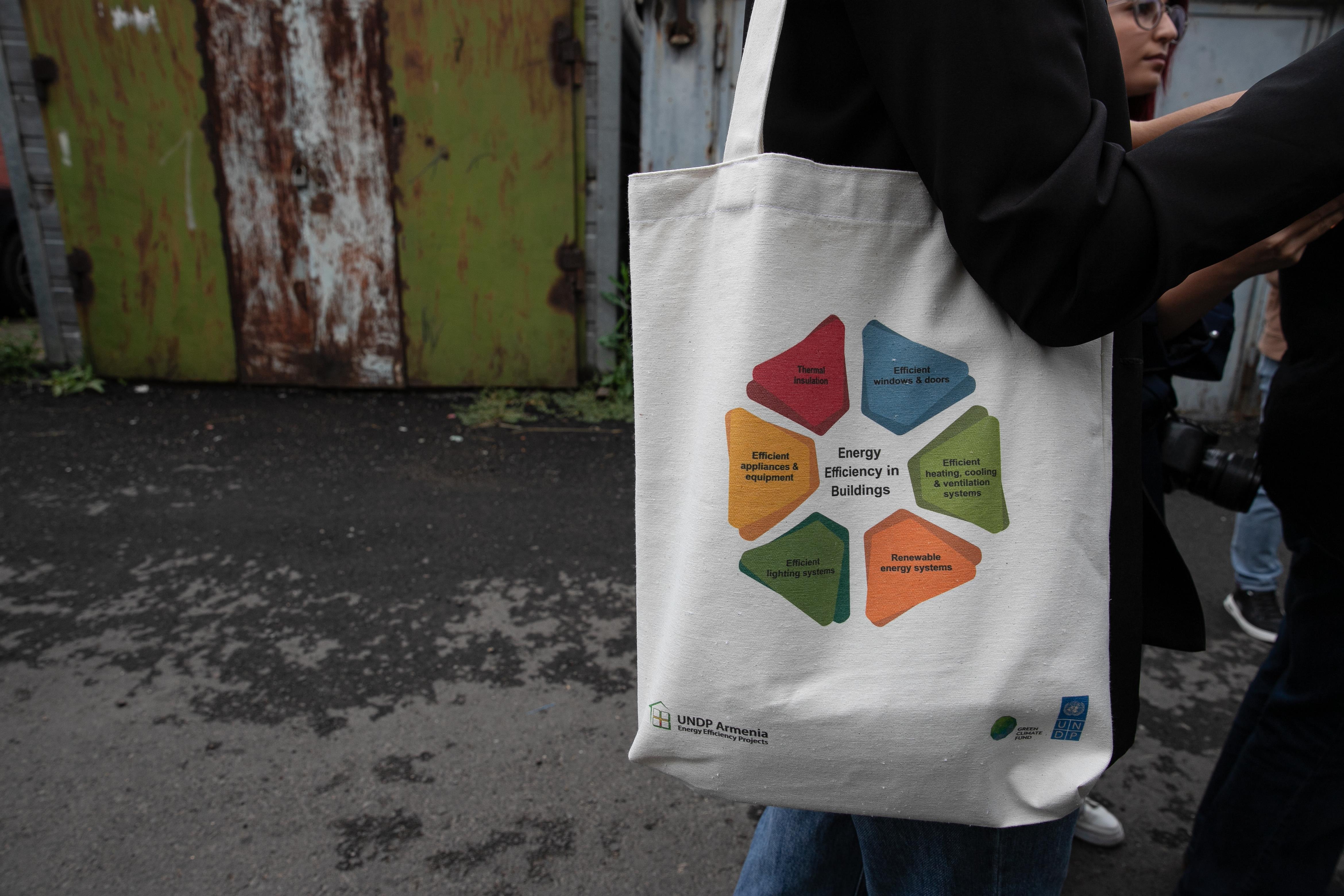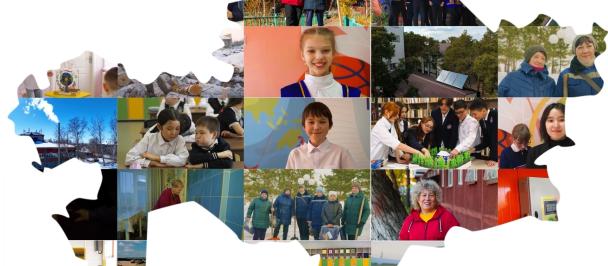Warming Hearts and Homes: Energy Efficiency Transforms Lives in Spitak
October 29, 2024

Nestled in Armenia’s Lori region, the town of Spitak has long been known for its biting winters and its resilience in the aftermath of the devastating 1988 earthquake. For many residents, including 67-year-old Mayranush Hovsepyan and her 75-year-old husband Levush Hakobyan, life had been a constant struggle against the cold. For years, they heated only one room in their apartment to survive the cold winters. However, the recent project on energy efficiency upgrades, co-financed by the UNDP and Green Climate Fund, and the Armenian government, have brought warmth and comfort to their home for the first time in years.
“We’ve been living here for 16 years,” Mayranush says. “And everything has completely changed with this retrofit. Our apartment is warm, and the building looks new. In winter, we can set the heating to the lowest level, and it’s still warm. My husband and I are very happy with that.”
Mayranush’s building was one of three in Spitak chosen for retrofitting as part of the UNDP-GCF “De-risking and Scaling-up Investment in Energy Efficient Building Retrofits” project. This initiative works alongside Armenia’s State Subvention Program to improve energy efficiency in residential buildings across the country. Launched in 2017, the project aims to reduce energy consumption, lower greenhouse gas emissions, and enhance the quality of life for residents, particularly in Armenia’s colder regions.
For Spitak’s residents, the upgrades included insulating the external walls, roofs, and basements of their buildings, as well as replacing old windows and doors with energy-efficient ones. Modern LED lighting systems were also installed, making the shared areas safer and more comfortable. Beyond the functional improvements, the renovations gave the buildings a fresh, modern look, making them stand out in the community and increasing the value of the apartments by 10-15 percent.
“For years, we were paying around 40,000 AMD per month in heating bills,” Mayranush explains. “Now, that’s been reduced to around 18,000 AMD. It’s a huge relief for us, especially since both my husband and I have disability status and mostly rely on our pensions. We couldn’t have afforded to keep the heating on as much as we needed to before without the support of our son.”
The financial savings have been significant for Mayranush and Levush, but the impact goes far beyond just cutting costs. For many elderly residents, the freezing winters in poorly insulated buildings had been a serious health risk. The building’s broken windows and malfunctioning doors allowed cold air to seep inside, making it nearly impossible for families to stay warm without facing high heating bills. As a result, many were forced to endure the cold to save money, leading to discomfort and worsening health conditions.
Now, with energy efficient retrofits, the situation has drastically improved. Residents like Mayranush can comfortably heat their entire homes without worrying about the financial burden. The improvements have increased the energy efficiency of their buildings by over 60 percent, reducing both heating and cooling costs by 40-60 percent.
Beyond the immediate benefits for Spitak’s residents, the project is also having a significant environmental impact. The retrofits have reduced greenhouse gas emissions by 320 tons of CO2 per year across the three buildings, contributing to Armenia’s broader goals of reducing its carbon footprint and fighting climate change. Additionally, families who previously relied on burning firewood for heating can now switch to gas, further reducing the pressure on the forests.
The retrofits were made possible through a collaborative effort between the UNDP, the Armenian government, and the Spitak community. Under a bilateral agreement, the project covered 25 percent of the energy efficient retrofit costs, while the remaining 75 percent was funded by the community and the State in the frames of the State Subvention Program. The total retrofit cost for the three buildings in Spitak was AMD 128.1 million, with AMD 102.5 million contributed by the government and community, and AMD 25.6 million by the GCF.
The project has also created short-term employment opportunities for local workers, as the reconstruction was carried out by residents of the community. This has not only stimulated the local economy but also fostered a deeper sense of ownership and pride among the residents in their newly upgraded buildings.
The success of the project in Spitak has sparked interest in other communities as well. “We have a relative from Vanadzor,” Mayranush says. “Every time she visits, she tells us how eager she is for her building to be retrofitted, too. Their building is also on the list for renovations soon.”
The program is not limited to any specific region in Armenia, meaning that buildings -whether residential or public - across the country can benefit from these energy efficiency upgrades. This has provided hope to many residents who are eager to see their homes transformed and their living conditions improved.
Reflecting on the past, Mayranush notes the hardships she and her husband have endured. “We’ve had a very difficult life. First, we survived the 1988 earthquake, barely saving my husband’s life. Then, we lived in terrible conditions in temporary shelters in Spitak, enduring many cold winters. Now, we have some health issues, but thanks to these changes, we can finally enjoy life.”
For Mayranush and her neighbors in Spitak, the energy efficient retrofits have provided more than just warmth - they have brought comfort, savings, and hope for a better future. As the project expands to other communities, it promises to transform more lives, one building at a time.



 Locations
Locations



